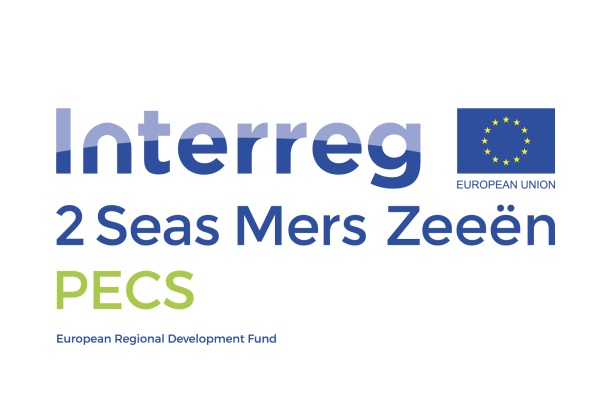PECS

Project summary
PECS = Ports Energy and Carbon Savings
Common challenge
One of the major challenges for the 2 Seas area is to achieve carbon reductions through introduction of low carbon technologies (incl. renewables and energy efficiency). This project is addressing this challenge; in particular the application of such technologies in maritime operations within small and medium sized (SMS-)ports. These ports face numerous common obstacles (e.g. limited resources, technical expertise, lack of collaboration, regulations) and as a result little has been done to reduce carbon emissions. Demonstrations of low carbon technologies and solutions in real life and different circumstances are required to raise awareness and to show feasibility. In addition to convince other SMS-ports it is also necessary to develop and showcase practical methods and tools as energy audit, potentials for renewables and the best mix of low carbon options. Finally SMS-ports need practical models for low carbon investment & business cases and energy cooperation structures.
Overall objective
Developing, testing and validating various methods, tools and concepts and realising and demonstrating proven and innovative applications for energy efficiency, specific coast-related renewable energy sources and energy storage in such a way that small and medium-sized ports will adopt and use these technologies much more, will start-up energy cooperations with all local stakeholders (in and outside ports) and are able to reduce their carbon emissions significantly.
Main outputs:
- 8 demonstrated technologically and economically feasible, innovative and state-of-the art low-carbon technologies in SMS-ports.
- 4 developed and validated tools and methods to achieve carbon reduction: energy audit, assessment of potentials of renewables, identification of energy savings, decision making to select the best mix of options.
- 1 developed and demonstrated model of an energy cooperation structure.
- 9 independent verification studies of feasibility of implemented low carbon technologies brought together in an overall
- report useful for other SMS-ports.
Organisations in the whole 2 Seas area who will benefit from these outputs are:
- 40 authorities of local governments with SMS-ports.
- 40 companies and users of SMS-ports.
- 20 SMEs specialized in low carbon technologies.
- 10 knowledge and research institutes specialized in low carbon and marine technologies.
Cross-border approach
To achieve the main project objectives, outputs and results and to make them usable for all SMS- ports in the 2 Seas area it is necessary to work cross border and to have a partnership which includes a variety of ports and experienced knowledge institutions. Only then it is possible to develop widely applicable and useful tools and methods and to carry out pilot investments with low carbon technologies in order to demonstrate and validate their feasibility. Only when this can be demonstrated these examples can convince other ports to take the same measures. Also, to develop good concepts and business models, which consist of a mix of measures, it is necessary to have different ports with very different circumstances on board in which these concepts and models can be tested and validated for wide use in the two seas area. Finally, the cross-border cooperation is needed to come to boundless usable governance structures in which authorities and all users of SMS-ports cooperate.
What is new?
- 5 SMS-ports representative for the 2 Seas area act as living labs to implement, demonstrate and validate innovative and state-of-the art low carbon technologies using environment specific capabilities.
- Seeing ports as industrial park from perspectives such as process integration and industrial symbiosis to open up new opportunities.
- 4 research institutions, with the ports as labs and companies as partners, will jointly develop tools and methods, e.g. a tool to assess the best mix of technologies for energy production and storage in SMS-ports.
- Business models will be tested and validated consisting of new operational models and application in the field of energy efficiency, renewable sources and storage.
- New collaboration structures in SMS-ports will be developed and demonstrated aiming to increase the introduction of low carbon technologies.
- Awareness raising and persuasive communication to create behavioural changes in SMS-ports and companies working in these ports.
Programme priority 2
Low carbon technologies
Programme priority specific objective
SO 2.1 Increase the adoption of low-carbon technologies and applications in sectors that have the potential for a high reduction in greenhouse gas emissions.
Videos
Partners
| Country | Organization | Budget (€) |
|---|---|---|
| BE | Port Oostende | 1,176,635.00 |
| NL | Municipality of Hellevoetsluis | 329,600.00 |
| NL | Environmental Agency IJmon | 632,214.25 |
| NL | HZ University of Applied Sciences | 279,490.00 |
| FR | Centre for studies and expertise on risks environment, mobility and urban and country planning | 257,529.25 |
| FR | IndaChlor sasu | 3,145,310.00 |
| UK | Southampton Solent University | 269,307.70 |
| UK | Portsmouth City Council | 898,008.00 |
| BE | Ghent University | 333,151.65 |
| BE | Blue Power Synergy | 750,633.50 |
Total budget: EUR 8,071,879